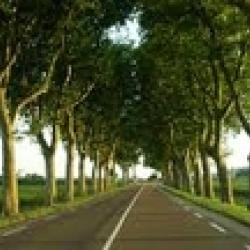Source Institutions
Source Institutions
Add to list Go to activity

In this inquiry-based lesson, learners measure the biomass of trees, calculate the carbon stored by the trees, and use this information to create recommendations about using trees for carbon sequestration. This activity encourages learners to think critically about managing forests for carbon sequestration. [Activity is publicly available through a web crawler capture on Archive.org. Activity write-up only, images are unavailable.]
- Under 5 minutes
- 1 to 2 hours
- 1 cent - $1 per student
- Ages 11 - 14
- Activity, Experiment/Lab Activity, Lesson/Lesson Plan
- English
Quick Guide
Materials List (per student)
- Measuring tape
- Calculator
- Carbon Sequestration Worksheet (page 1)
- Biomass parameters table (page 2)
- Pen/pencil
- Paper
Subjects
-
Engineering and Technology
-
Engineering
- Agricultural Engineering
- Bioengineering/Biomedical Engineering
-
Technology
- Agriculture and Biotechnology
-
Engineering
-
Life Sciences
- Cells
-
Diversity of Life
- Plants
-
Ecology
- Human Impact
-
Physical Sciences
- Chemistry
-
Mathematics
- Algebra
-
Data Analysis and Probability
- Data Analysis
- Data Collection
- Data Representation
-
Measurement
- Circles
-
The Nature of Science
-
Science and Society
- Risks and Benefits
-
The Scientific Process
- Conducting Investigations
- Gathering Data
- Formulating Explanations
- Communicating Results
-
Science and Society
-
The Nature of Technology
-
Technology and Society
- Impacts of Technology
- Technology and the Environment
-
Technology and Society
Informal Categories
- Nature and Environment
- Outdoor Activity
Audience
To use this activity, learners need to:
- see
- read
- be mobile
- touch
Learning styles supported:
- Involves hands-on or lab activities
Other
Components that are part of this resource:
Access Rights:
- Free access
By:
Source Collection
- Teachers TryScience
Rights:
- All rights reserved, Teachers TryScience, 2012
